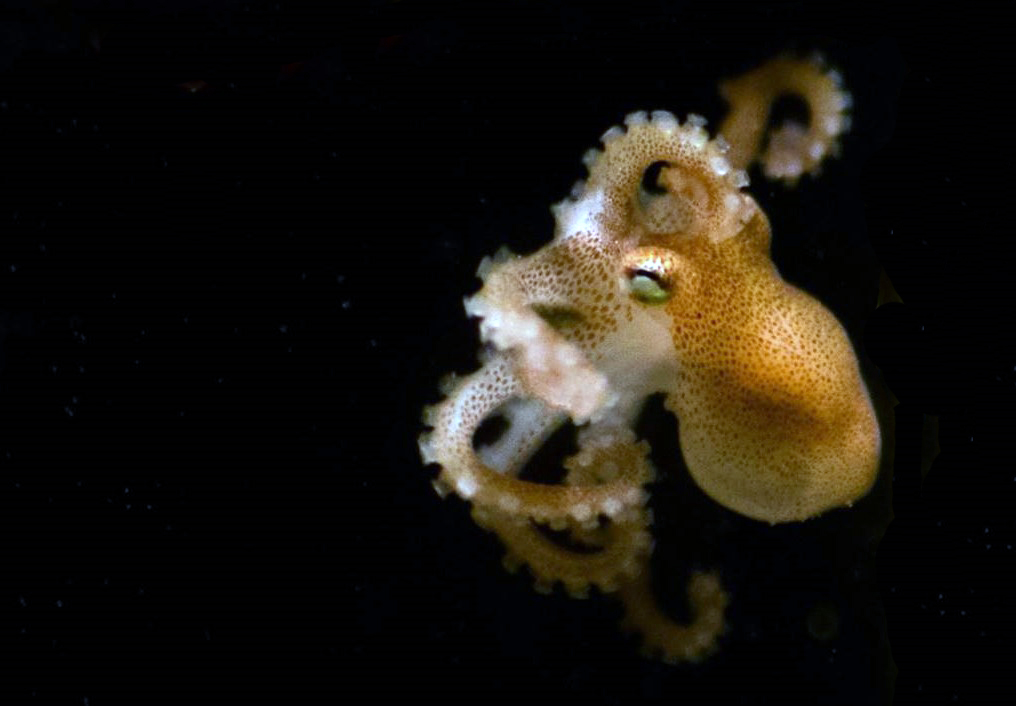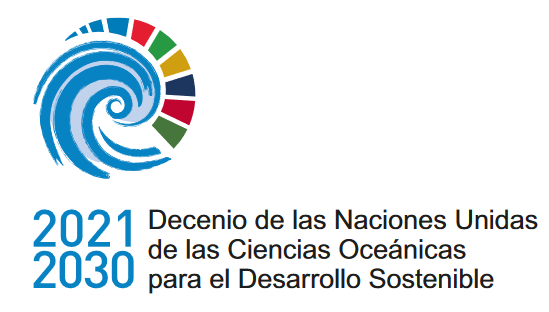Comportamiento reproductivo del pulpito patagónico (Octopus tehuelchus) en condiciones de laboratorio
DOI:
https://doi.org/10.47193/mafis.3312020061807Palabras clave:
Octopus tehuelchus, acuicultura, cópula, hectocótiloResumen
El pulpito patagónico (Octopus tehuelchus) es una especie que mantiene una pesquería artesanal en la zona norte de la costa patagónica argentina y que presenta potencial para la acuicultura. Este trabajo tuvo el objetivo de caracterizar el comportamiento de apareamiento de cuatro parejas de pulpitos patagónicos en condiciones de laboratorio. Los resultados muestran que esta especie presenta un complejo comportamiento reproductivo. La hembra se mantuvo en su refugio durante los eventos de pre-cópula y copula. El macho y la hembra permanecieron enfrentados por la cara oral durante la cópula la cual duró de 3 a 5 minutos. Las observaciones realizadas contribuirán a un mejor manejo de los ejemplares reproductores de la especie en cautiverio.
Descargas
Métricas
Citas
Berrueta M, Aristizabal Abud E, Ricci E, Boccanfuso J. 2018a. Avances en el desarrollo de tecnología de producción comercial de juveniles de pulpito Octopus tehuelchus 2016-2017. Inf Ases Transf INIDEP Nº 12/2018. 15 p.
Berrueta M, Radonic M, López A, Desiderio J, Ortiz N. 2018b. Modelo predictivo para la evaluación del estatus reproductivo del pulpito Octopus tehuelchus mediante el uso de la técnica ecográfica. Inf Invest INIDEP Nº 110/2018. 16 p.
Boal JG, Gonzalez SA. 1998. Social behaviour of individual oval squids (Cephalopoda, Teuthoidea, Loliginidae, Sepioteuthis lessoniana) within a captive school. Ethology. 104: 161-178.
Boletzky S, Hanlon RT. 1983. A review of the laboratory maintenance, rearing and culture of cephalopod molluscs. Mem Natl Mus Victoria. 44: 147-187.
Butler-Struben HM, Brophy SM, Johnson NA, Crook RJ. 2018. In vivo recording of neural and behavioral correlates of anesthesia induction, reversal, and euthanasia in cephalopod molluscs. Front Physiol. 9: 109-112.
Caldwell RL, Ross R, Rodaniche A, Huffard CL. 2015. Behavior and body patterns of the larger Pacific striped octopus. PLOS ONE. 10 (8): e0134152.
Fassiano A, Ortiz N, Ríos de Molina MC. 2017. Reproductive status, antioxidant defences and lipid peroxidation in Octopus tehuelchus (Cephalopoda: Octopodidae) females. J Nat Hist. 51: 2645-2660.
Fiorito G, Affuso A, Anderson DB, Basil J, Bonnaud L, Botta G, Cole A, D’Angelo L, De Girolamo P, Dennison N, Dickel L, et al. 2014. Cephalopods in neuroscience: regulations, research and the 3Rs. Invert Neurosc. 14: 13-36.
Gutiérrez R, Farías A, Yany G, Uriarte I. 2012. Interacciones macho-hembra del pulpo rojo patagónico Enteroctopus megalocyathus (Cephalopoda: Octopodidae) durante el comportamiento de apareamiento. Lat Am J Aquat Res. 40: 808-812.
Hanlon RT, Messenger JB. 1996. Cephalopod behavior. Cambridge: Cambridge University Press. 232 p.
Huffard CL, Caldwell RL, Boneka F. 2008. Mating behavior of Abdopus aculeatus (d’Orbigny 1834) (Cephalopoda: Octopodidae) in the wild. Mar Biol. 154: 353-362.
Iribarne O. 1991. Intertidal harvest of the Patagonian octopus, Octopus tehuelchus (d’Orbigny). Fish Res. 12: 375-390.
Krebs JR, Davies NB. 1993. An introduction to behavioural ecology. 3th ed. Oxford: Blackwell Scientific Publications. 420 p.
Mangold K. 1987. Reproduction. In: Boyle PR, editor. Cephalopod life cycles: Volume II comparative reviews. London: Academic Press. p. 157-200.
Moynihan M. 1983. Notes on the behavior of Euprymna scolopes (Cephalopoda: Sepiolidae). Behaviour. 85: 25-41.
Nabhitabhata J, Nilaphat P, Promboon P, Jaroongpattananon C. 2005. Life cycle of cultured bobtail squid, Euprymna hyllebergi (Nateewathana, 1997). Phuket Mar Biol Cent Res Bull. 66: 351-365.
Narvarte M, González R, Filippo P. 2007. Artisanal mollusk fisheries in San Matías Gulf (Patagonia, Argentina): An appraisal of the factors contributing to unsustainability. Fish Res. 87: 68-76.
Narvarte M, González R, Fernández M. 2006. Comparison of tehuelchus octopus (Octopus tehuelchus) abundance between an open-access fishing ground and a marine protected area: evidence from a direct development species. Fish Res. 79: 112-119.
Narvarte M, González R, Sica I. 1996. Estado actual de la pesquería de pulpito patagónico Octopus tehuelchus en el Golfo San Matías. Informes Técnicos del Plan de Manejo Integrado de la Zona Costera Patagónica, Puerto Madryn, Argentina. 19. 33 p.
Norman M. 2000. Cephalopods: a world guide. Hackenheim: ConchBooks. 318 p.
Pujals MA. 1982. Contribución al conocimiento de la biología de Octopus tehuelchus d’Orbigny (Mollusca: Cephalopoda). Acad. Nac. Cs. Serie I - Ciencias. 46: 30-71.
Ré ME. 1998. Pulpos octopódidos (Cephalopoda: Octopodidae). In: Boschi EE, editor. El Mar Argentino y sus recursos pesqueros. Tomo 2. Los moluscos de interés pesquero. Cultivos y estrategias reproductivas de bivalvos y equinoideos. Mar del Plata: Instituto Nacional de Investigación y Desarrollo Pesquero (INIDEP). p. 69-98.
Ré ME. 2008. Cefalópodos. In: Boltovskoy D, editor. Atlas de sensibilidad del mar y la costa. http://geoportal.ddns.net/atlasambiental/index.htm.
Ré ME, Ortiz N. 2011. Cefalópodos capturados en la Campaña “CONCACEN – Noviembre 2009”, B/O Puerto Deseado. VIII Congreso Latinoamericano de Malacología. Libro de resúmenes. p. 249.
Rocha F, González A, Segonzac M, Guerra A. 2002. Behavioural observations of the cephalopod Vulcanoctopus hydrothermalis. Cah Biol Mar. 43: 299-302.
Sims DW, Nash JP, Morritt D. 2001. Movements and activity of male and female dogfish in a tidal sea lough: alternative behavioural strategies and apparent sexual segregation. Mar Biol. 139: 1165-1175.
Rodrigues M, Garcí M, Guerra A, Troncoso J. 2009. Mating behavior of the Atlantic bobtail squid Sepiola atlantica (Cephalopoda: Sepiolidae). Vie et Milieu. 59: 271-275.
Storero LP, Narvarte M, González RA. 2012. Reproductive traits of the small Patagonian octopus Octopus tehuelchus. Helgol Mar Res. 66: 651-659.
Storero LP, Ocampo-Reinaldo M, González RA, Narvarte M. 2010. Growth and life span of the small octopus Octopus tehuelchus in San Matías Gulf (Patagonia): three decades of study. Mar Biol. 157: 555-564.
Tsuchiya K, Uzu T. 1997. Sneaker male in octopus. Venus Jap J Malacol. 56: 177-181.
Wells MJ, Wells J. 1972. Sexual displays and mating of Octopus vulgaris Cuvier and O. cyanea Gray and attempts to alter performance by manipulating the glandular condition of the animals. Anim Behav. 20: 293-308.
Wood JB, Kenchington E, O’Dor RK. 1998. Reproduction and embryonic development time of Bathypolypus arcticus, a deep-sea octopod (Cephalopoda: Octopoda). Malacología. 39: 11-19.

Descargas
Publicado
Cómo citar
Número
Sección
Licencia
Derechos de autor 2020 Mercedes Berrueta, Julián A. Desiderio, Florencia Agliano, Andrea Victoria López, Eddie O. Aristizabal Abud, Nicolás Ortiz

Esta obra está bajo una licencia internacional Creative Commons Atribución-NoComercial-CompartirIgual 4.0.
Los autores de los artículos publicados en Marine and Fishery Sciences conservan los derechos de autor de sus artículos, a excepción de las imágenes de terceros y otros materiales añadidos por Marine and Fishery Sciences, que están sujetos a los derechos de autor de sus respectivos propietarios. Por lo tanto, los autores son libres de difundir y volver a publicar sus artículos, sujeto a los requisitos de los propietarios de derechos de autor de terceros y sujeto a que la publicación original sea completamente citada. Los visitantes también pueden descargar y reenviar artículos sujetos a los requisitos de citas. La capacidad de copiar, descargar, reenviar o distribuir cualquier material siempre está sujeta a los avisos de derechos de autor que se muestran. Los avisos de copyright deben mostrarse de manera prominente y no pueden borrarse, eliminarse u ocultarse, total o parcialmente. El autoalmacenamiento en servidores y repositorios de preimpresión está permitido para todas las versiones.
Esta revista ofrece a los autores una política de acceso abierto. Los usuarios pueden leer, descargar, copiar, distribuir, imprimir, buscar o vincular los textos completos de los artículos, o usarlos para cualquier otro propósito legal dentro de la licencia Creative Commons 4.0 (BY-NC-SA), sin solicitar permiso previo del editor o del autor. Esto está de acuerdo con la definición BOAI de acceso abierto.



























